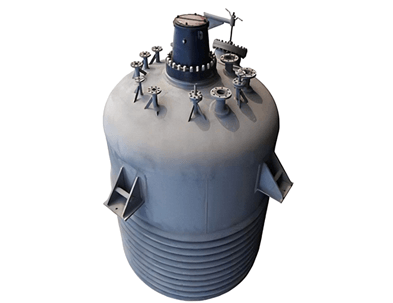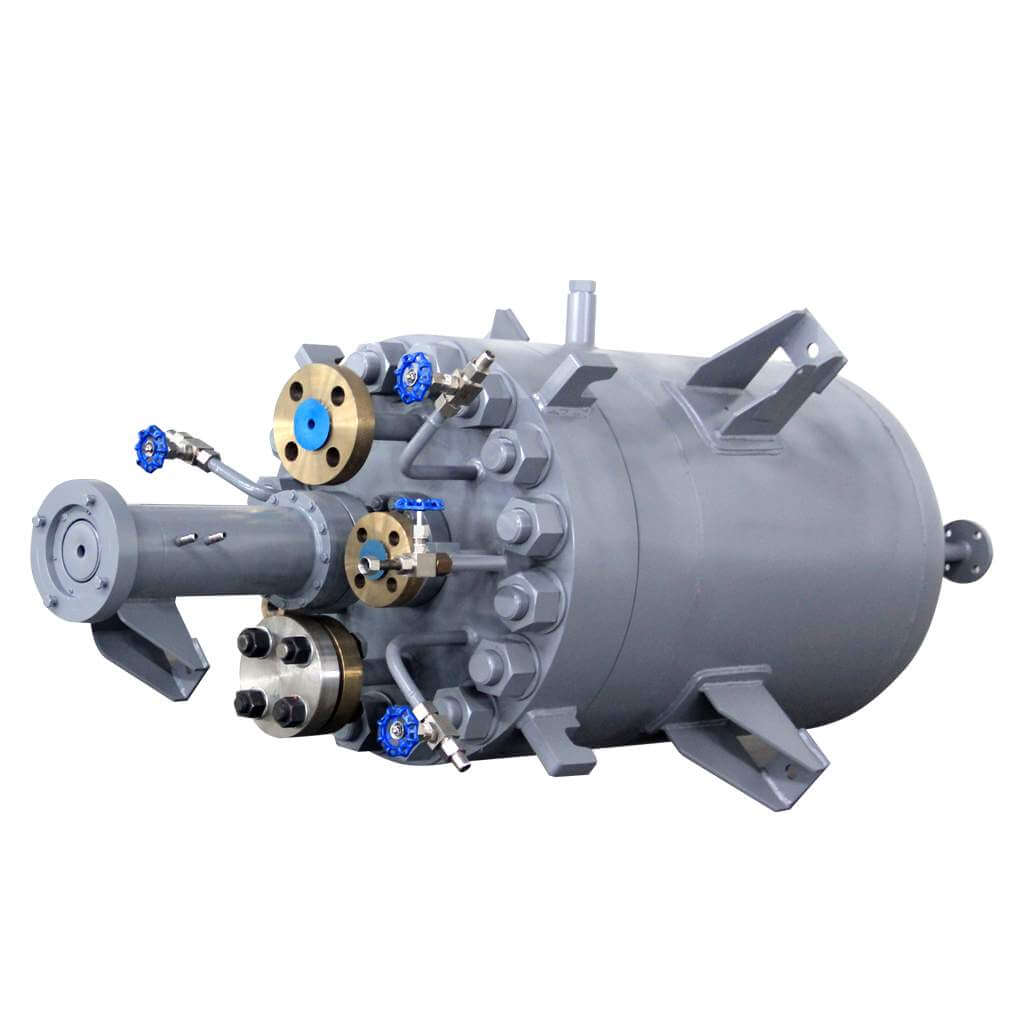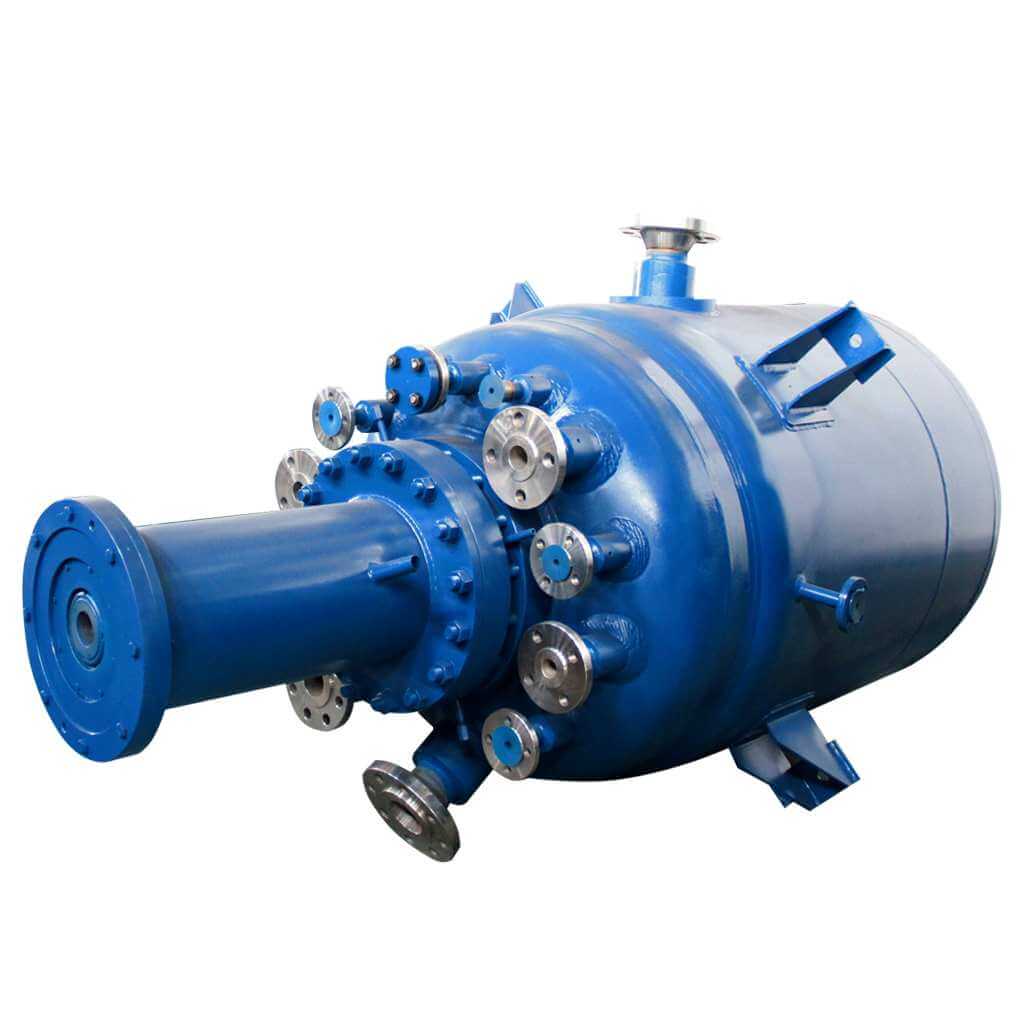

Hydrogenation Reactor
Hydrogenation Reactor:used in chemical synthesis, pharmaceutical manufacturing, food processing, and other fields.
Material
stainless steel (316, 304), carbon steel, others
Capacity (L)
10-10000+
Mixing system
anchor, paddle, frame and others
Heating system
electric heating, oil heating and others
Hydrogenation reactors are widely used in various catalytic reaction speeds, high-pressure and high-temperature generation, hydrogenation reactions, vapor-liquid two-phase, liquid-liquid two-phase, chemical reactions, corrosion detection, precision processing, supercritical extraction, and other applications. Mainly distributed in petrochemical equipment, organic chemistry, pharmaceutical industry, polymer synthesis, metallurgical industry, and other industries. At the same time, it has the characteristics of heat resistance, corrosion resistance, and high production capacity.
Request a quoteA hydrogenation reactor is a chemical reactor used in laboratory experiments. It is suitable for temperature measurement and chemical reactions with the simultaneous addition of inert gas, pressure, conductivity, and redox potential. The device is a production technology test equipment that integrates a reaction vessel, reaction condition control, and management system, raw material feeding, and product information output. The hydrogenation reactor has the characteristics of smooth operation, low noise, simple and convenient operation, etc. It is an ideal device for laboratory management and analysis of various chemical reactions.

Operation steps of hydrogenation and hydrogen release in hydrogenation reactor
1.First check the air tightness of the hydrogenation reactor, close all valves, and cover the pot. Open the inlet valve and inject 1 MPa of nitrogen. Close the air inlet valve and observe the pressure changes to ensure there are no leaks in the device.
2.During hydrogenation operation, check whether each valve is tightly closed, point the exhaust hose to an open-air circulation position, and install a hydrogen pressure-reducing valve and a nitrogen pressure-reducing valve. After installing the valve, use soapy water to check for air leaks and vacuum the air above the liquid level at the exhaust port. Open the air inlet valve of the hydrogenation reactor, open the nitrogen pressure-reducing valve, and fill in nitrogen to increase the pressure in the hydrogenation reactor (P=0.2Mpa). Then close the nitrogen pressure-reducing valve, close the air inlet valve, and hold for about 2 minutes to see if the pressure on the pressure gauge drops. Also, lower your head and listen for leaks in the valve and kettle lid. If there is no leakage, slowly open the exhaust valve. When the internal pressure of the hydrogenation reactor reaches 0.01Mpa, close the exhaust valve. Repeat the above operations, open the air inlet valve, open the hydrogen pressure valve, charge hydrogen to the required pressure, close the air inlet valve, close the hydrogen pressure valve, and then adjust other parameters to the required state for reaction.
3.Hydrogen discharge operation. After confirming that the reaction is completed, slowly discharge hydrogen to the endpoint, open the inlet valve, fill with nitrogen to 0.2Mpa, close the inlet valve, and then slowly open the exhaust valve to discharge the mixed gas in the hydrogenation reactor. After three ventilations, use a vacuum pump to extract the gas from the liquid surface, open the exhaust valve and sampling valve, and start discharging the material from the bottom valve. If there is leakage, dip it out with a wet towel immediately. Put it into a bucket filled with water, use a small amount of dilute acid to destroy it, and close the bottom valve immediately after discharge.

Operation steps of hydrogenation reactor
1.Clean the hydrogenation reactor and add different reaction media and catalysts into the hydrogenation reactor while mixing.
2.Tighten the bolts and nuts of the hydrogenation reactor tank cover evenly and symmetrically, and tighten all valves.
3.Connect the nitrogen cylinder to the liquid phase port of the hydrogenation reactor through the system pipeline, open the nitrogen cylinder, and adjust the pressure-reducing valve to adjust the economic pressure to the reached working environment pressure.
4.Then open the liquid phase valve, introduce nitrogen into the hydrogenation reactor, maintain the pressure for a certain period of time, and observe whether there is leakage in the hydrogenation reactor. If there is no leakage, the nitrogen in the hydrogenation reactor should pass through the gas phase valve but keep part of it to prevent air from entering and replace the air in the kettle three times in a row.
5.Connect the hydrogen bottle to the liquid phase port of the hydrogenation reactor through a pipeline, open the hydrogen bottle, adjust the pressure-reducing valve to the required working pressure, and then open the valve of the liquid phase port. Introduce hydrogen into the hydrogenation reactor, and clean the nitrogen in the hydrogenation reactor through three consecutive replacements in the same way.
6.Then give a heating voltage, adjust the instrument to the temperature to be reached, and start stirring.
The hydrogenation reactor has the following characteristics: flexible and convenient operation. It can perform intermittent, semi-intermittent, or continuous operation according to process requirements; the temperature is easy to control. According to production needs, the production time can be controlled and the response speed can be easily controlled. Therefore, it is widely used in chemical, rubber, pesticide, fuel, pharmaceutical, and other industries to realize the reaction of chemical processes. In order to ensure the safety and stability of the reaction, strict safety measures and operating specifications need to be implemented in the hydrogenation reactor.




